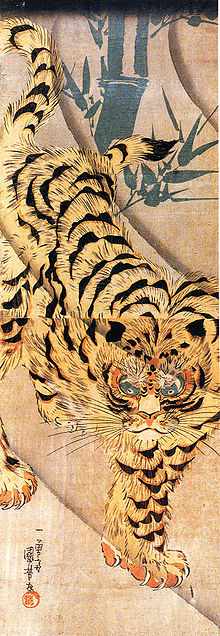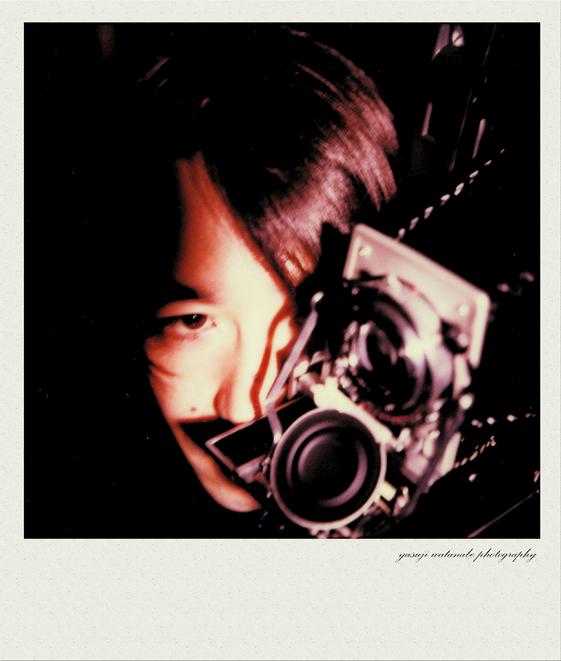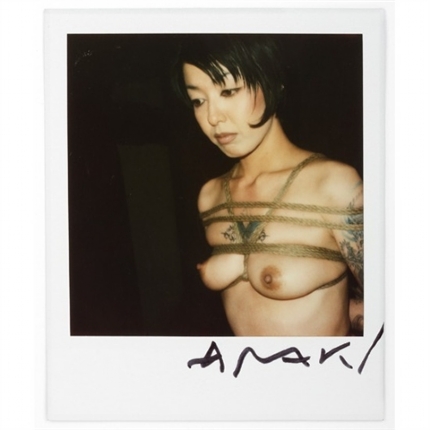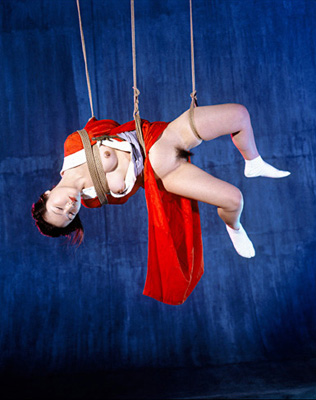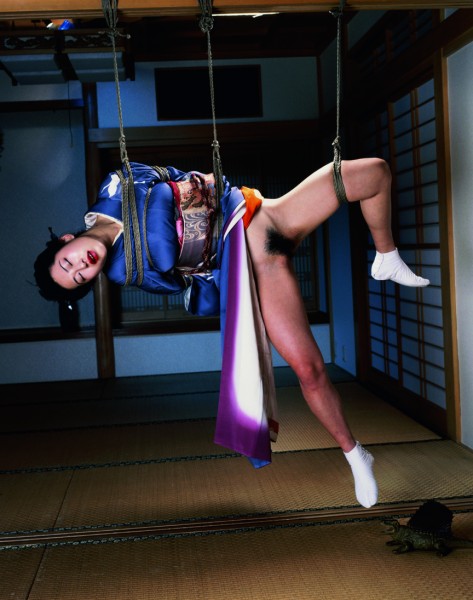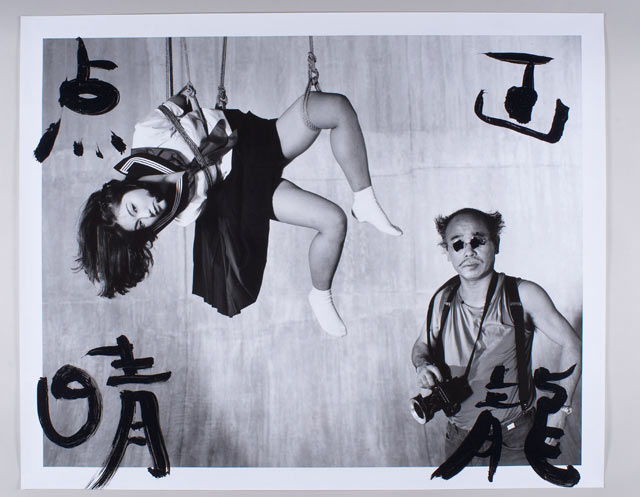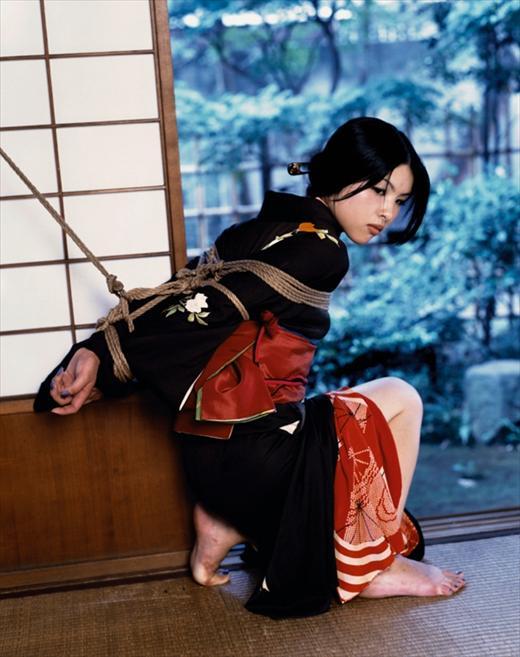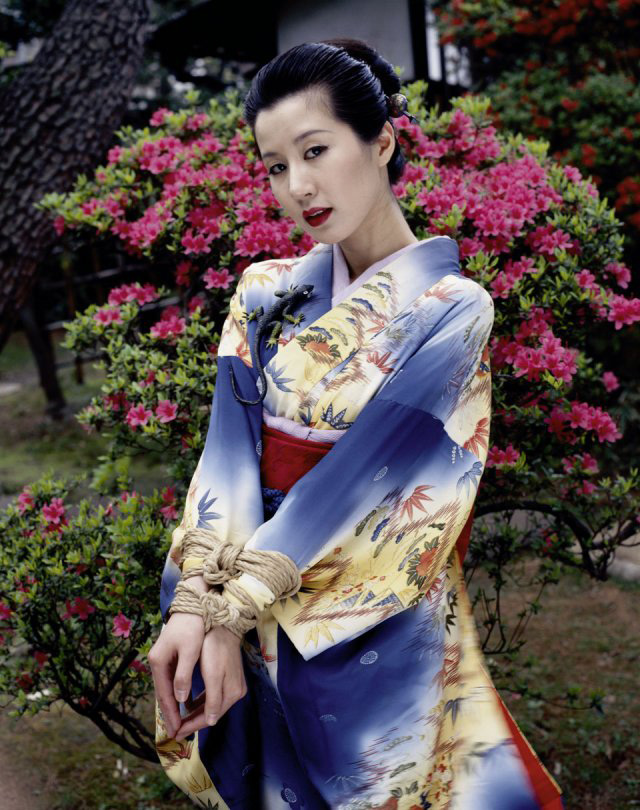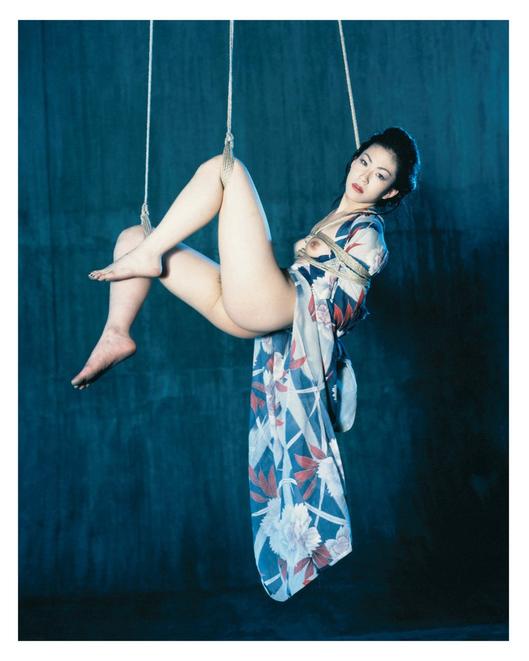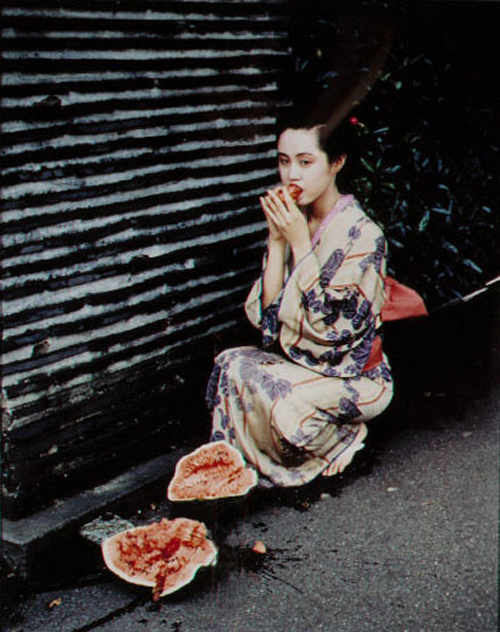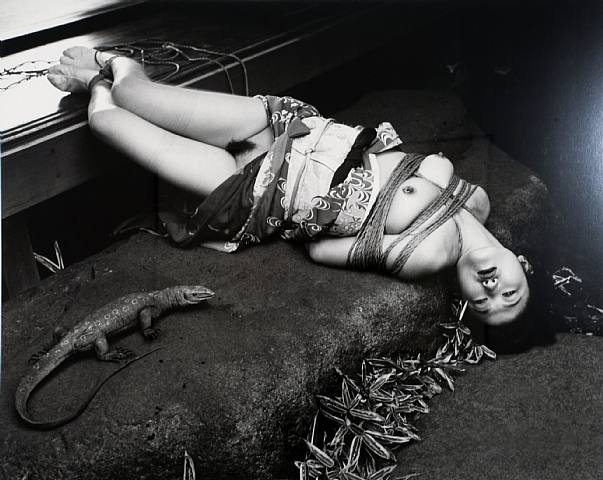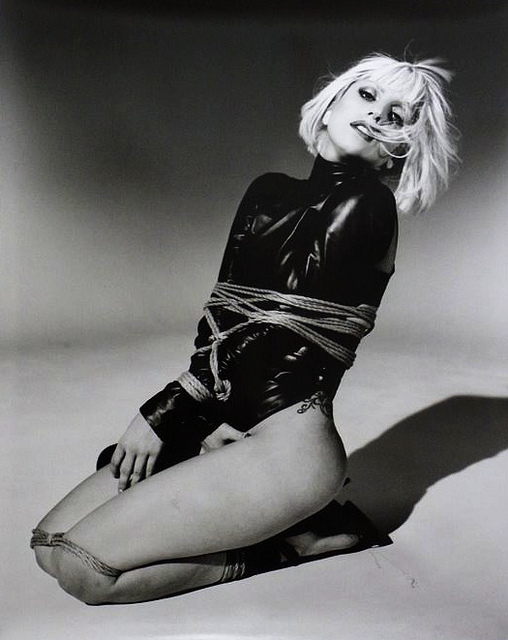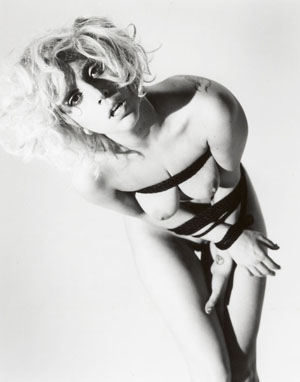The Beauty of Kinbaku
Chapter Three
An Interview With "The Most Famous Bakushi (Rope Master)
You've Never Heard Of!"
by Master "K"
In our last two posts we profiled the top 10 Kinbaku photography books ever published (imho).
As the readers of those posts might remember, number 3 on our list was the remarkable book recently released by Taschen that featured the best Kinbaku photographs of Araki Nobuyoshi, generally acknowledged as one of Japan's greatest photographers.
As is only fitting, Araki deserves the lion's share of the credit for this beautiful, if quite expensive (it retails for around $1000) publication. However, there is another figure that also deserves credit, one that is a little more hidden in the shadows. For while it's true that Araki will occasionally tie his models himself most of the time he has a professional rope master working with him and for most of the work he's done over the last few years that man is Watanabe Yasuji, or, as I call him in this post, "the most famous bakushi you've never heard of."
I hope the reader will enjoy this interesting look behind-the-scenes of some of the best Kinbaku photography being done today. I particularly find it interesting to hear Mr. Watanabe discuss his various techniques, his history and time with Araki and his apparent lack of appreciation for Kinbaku stage shows.
I should also mention that it is because of my association with Yukimura Haruki sensei that I was able to make contact with Mr. Watanabe in the first place. Yukimura sensei and Watanabe worked together on a lovely book of Kinbaku photographs a few years ago entitled "Akai Hana." However, that time Mr. Watanabe was behind the camera! You see, in addition to his work as a rope master, Mr. Watanabe is also an accomplished photographer and both of these skills were learned by him when he began his career as an editor for the famous, but now defunct, Japanese BDSM magazine "SM Sniper."
I must also give credit and special thanks to my good friend and colleague Alice Liddell who facilitated the following interview and without whose help creating such a piece and bringing it to you would have been impossible.
And now, without further ado, here is the first interview in English ever given by Watanabe Yasuji, bakushi for the world famous photographer Araki Nobuyoshi.
Or everything you always wanted to know about Japanese erotic bondage when you suddenly realized that you didn't speak Japanese
Kinbaku
and Art
Please note: no part of these articles may be reproduced by any means without the express written consent of the author or the publisher, King Cat Ink.
Watanbe Yasuji - Self-portrait
Example of the Watanabe-Araki Style Gote
Example of the Watanbe-Araki Style Yoko Zuri
Images From
"Nobuyoshi Araki: Bondage"
Watanbe M-ji-zuri from "Nobuyoshi Araki: Bondage"
Nobuyashi Araki - Self-portrait With Model
Example of Watanabe-Araki Style Yoko Zuri
Araki Nobuyoshi - Model With Watermelon
Araki Nobuyoshi - Bound Model With Lizard
Takakura Miki
Araki Nobuyoshi - Lady Gaga Photo Shoot for the Japanese Edition of "Vogue Pour Hommes"
Nobuyoshi Araki: Bondage
Links to Other Chapters of Kinbaku and Art
The Interview
Question - What is your background and how did you begin your career in Japanese SM/kinbaku?
Watanabe - I studied classical literature at Rissho University but I wasn’t a serious student. I did graduate, however. I was interested in subculture and “abnormal” culture and wanted to become a fiction writer or literary figure, but that didn’t work out. I was working aimlessly when I came to Million Publishing (publisher of SM Sniper) not out of any interest in SM but because I was interested in publishing.
At the time, Million couldn’t keep staff because people didn’t want to be associated with SM and pornographic publications. I joined in 1992, when Hirata Akira was the chief editor. Hirata was the 8th editor of SM Sniper. By around 1996 I had become chief editor and I stayed with the company until SM Sniper folded in 2008. I was 25 when I joined the company. I am 46 now..
Q - How long were you an editor of SM Sniper?
Q - In your opinion, what differentiated SM Sniper from other SM magazines of the time?
W - A long time. (Laughs).
W - Sniper introduced radical modern art photography and drawings, and didn’t limit itself to kinbaku but included text about all kinds of different fetishes. I think that’s what distinguished it from the other magazines.
Q - When did you actually begin tying for SM Sniper? Was it for Araki?
W - I learned bondage not just for Araki, but for Sniper photo shoots in general.
Q - Did anyone teach you how to tie or did you learn by assisting at photo shoots?
W - I learned by watching at photo shoots. I got useful advice on the scene from the chief editor and from experienced photographers such as Tanaka Kinichi, who was doing still photography for pink movies and SM magazines.
Q - Who were the most talented nawashi, models and photographers you worked with at SM Sniper?
W - It was more the critics and illustrators who interested me. For instance, a critic named Nakada Koji, the photographer critic Iizawa Kozaro and an illustrator named Ota Keiichi. A lot of the older generation of people working with SM magazines were anti-establishment types who were involved in the student protests and couldn’t get jobs in “real” companies.
I was aware of Araki before he joined the company, because Araki was already famous – infamous, in fact, for stating in mainstream photography magazines like Asahi Camera and Mainichi Camera that he took kinbaku photos. He had a reputation as a weird, wild guy.
Q - When and how did you begin working with Araki?
W - Araki was already working with SM Sniper (editor's note - Araki began doing monthly Kinbaku photo layouts for SM Sniper in 1979). Helping out at Araki’s photo shoots and doing the tying for him was a job requirement. The magazine did photo shoots about half of every month, and learning to tie and tie fast was part of the job. I started out watching and assisting my predecessor as chief editor, a man named Ogata, who did the tying for Araki. My first shoot with Araki was at a gorgeous pre-war Western style mansion in Chiba, an overnight shoot organized by Araki as a farewell present for someone who was leaving. Araki was very kind that way.
Q - Was the editor Ogata the only other editor before you to tie for Araki's shoots?
W - The editors of Sniper did Araki’s bondage before me. As far as I know, it was the editors Onishi and Ooyagi who did it before Ogata.
Q - When you work with Araki who does the tying?
W - I do. Araki never tells me how to tie. Araki might say, do a Yoko zuri (sideways suspension), or ushirote shibari. Or put her hands in front of her, like an Edo-era prisoner. But other than that, I'm free to tie as I liked. By the way, I favor thin neat rope, personally.
Q - Are the models truly amateurs?
W - Yes. At Sniper, we’d get 5 or so women a month writing in asking to be Araki’s model. It was hard to choose among them, and it wasn’t easy to be selected.
Q - Are the models truly tied or is the bondage just loosely faked for the photographs?
W - They are truly tied. You wouldn’t get the right expressions or postures if it wasn’t properly done.
Q - How is the distinctive takate-kote constructed for the Araki shoots? It appears to be the same style of gote in most of the Araki photographs but it looks different from the more traditional gote constructions.
W - Hmmm? I'm not aware that there is anything distinctive about my gote.
Q - The gote you do for many of the beautiful Araki pictures we've seen seems to start with ropes above and below the model's breasts but the initial ropes always go under her arms and against her rib cage (as opposed to over her upper arms as in a typical gote construction) and you never seem to use kannuki (cinches) to tighten the pattern. Why is this?
W - I don’t always do it that way, but for Araki’s photo shoots, I often do it that way. Araki likes it that way, and after doing a lot of shoots together, we sort of settled on that. I think it’s that Araki doesn’t like it if there are a lot of ropes on top of each other, making the rope the main focus.
The first thing I do is pass the ropes under the arms and run it through the wrists in back, then reverse the rope and run it from the shoulder to between the breasts, then run it through the rope under the breasts, then bring it back to the back. That constricts both the gote and the chest ropes together, and creates a sense of tension. It’s simple because it uses fewer ropes. If it looks a little lonely (too simple), I add some more rope.
Q - Why do you and Araki favor the Yoko zuri for most of your suspensions?
W - Suspension is good because it gets the right effect from the model, by taking her to the edge. Yoko is good because it has various possibilities and gets a good expression out of the model. There really is only M-kaikyaku or Yoko zuri for suspensions. I mean, you could do an upside down suspension, but that doesn’t offer much variety in terms of pose or expression.
Q - How do you construct your Yoko zuri?
W - Three points: waist/hips (“koshi”), chest
and upper thighs. I do the koshi first, then the
chest, then the legs last. When I do an
M-kaikyaku tsuri I make it look like the wrists
are bearing weight but I don’t involve wrists
in the tie. Too dangerous.
Q - I presume you mean you tie the hands up in
the back but don't involve them in any manner
in the suspension. Is this correct?
W - Exactly. The hands are tied but the wrist tie
is not connected to the weight-bearing ropes. The
weight is carried by the koshi rope and some on
the leg rope.
Q - In the Yoko zuri, where do you connect the tsuri nawa that holds the model's upper body (as opposed to her hips or legs)? It looks as if the tsuri nawa is often connected to a separate rope that circles the model's lower rib cage and not to the gote proper. Is this correct?
W - I do not attach the suspension rope directly to the wrists regardless of the type of suspension, whether it is a Yoko zuri or a vertical suspension. That is to avoid placing stress on the wrists in case of some slip or change. Unlike a lot of people who tie for performances, I am not crating up the body with rope into a solid package for suspension. I put a separate chest rope around the upper body, and attach the suspension rope there.
Q - When you do your Yoko zuri do your assistants hold the model in place as you tie? If not, does the model stand on a box or platform before she is airborne?
W - When we did a Yoko zuri, I bondaged the model’s entire body in a decorative way, and then attached the suspension ropes at three places. Up until the point of fixing the chest rope, I did everything alone. When I attached the koshi aand thigh ropes to the ceiling, I had to have someone support her.
Q - In the M-ji-zuri, where do you connect the main tsuri nawa? That is, are you connecting it to a concealed hip harness or is it connected to the gote? If it's connected to the gote, where is it connected?
W - For the same reason as above, I do not attach it to the gote nawa. I make a separate rope around the hips (koshinawa) and attach it there.
Q - For how long are the models usually suspended while you take the Yoko and M-ji zuri photographs?
W - Regardless of whether it was a sideways or upright suspension, we left her suspended until Araki said he was done. How long that was depended on the model’s endurance, but it was often quite long. Araki would just keep taking pictures as she endured and until her expression became quite pained. I never measured how long it actually was, but if there were times when she was down within 3 minutes there were also times when a model was suspended for 7-8 minutes.
Q - When you tie for Araki what are your chief safety concerns? For instance, are you concerned about nerve compression in the hands/arms?
W - In terms of safety, my answer is the same as above.
Q - What was the most difficult kinbaku done for an Araki shoot?
W - Not just in the suspensions, but in every bondage I did, I worked very hard to create shapes and forms in which Araki would see beauty. It was always difficult work.
Q - Were the Araki shoots difficult?
W - The shoots for Araki were difficult because he asked for a lot of strange props. Like in Chiba (Watanabe’s first shoot with Araki – see above), he asked for walnuts in the shells. I had to drive all over to find them! There’s also a famous picture of a model eating a watermelon on the street. I bought that, in Higashi Nakano, on instructions from Araki. The lizards Araki brought himself. They are “yamori” (gecko, house lizards) caught by Araki’s cat. But once he started shooting it was fast and smooth.
Q - Now that you are a photographer, what do you look for artistically in a kinbaku image?
W - Good facial expression. I had to do lots of obvious erotic/sexual work for Sniper, but I personally prefer more subtle poses with reticent, emotionally closed, even stoic, models.
Q - I very much admire your book with Yukimura Haruki sensei ("Akai Hana"). How are he and Araki similar or different?
W - The question is difficult because Araki is a photographer and Yukimura is a kinbakushi (editor's note - However, Yukimura sensei began his career as a photographer so he is actually both photographer and bakushi). But one thing they have in common is they both like women and are kind to women. In Akai Hana, the shoot with the last model, Nana-chan, went particularly well, because her boyfriend or husband was along and when she responded to Yukimura sensei so erotically she looked so guilty, as if she was caught in an affair. By the way, Osada Steve's well known model and stage partner, Ageha is also in this book. She came to me wanting to be photographed because she liked my pictures and not just my kinbaku photographs.
Q - What do you think is the most beautiful kinbaku book ever produced?
W - I couldn’t easily answer that, but I like the old stuff: Itoh Seiu and Kitan Club.
Q - What do you think of the Nikkatsu SM movies of the 1970's?
W - I've seen and liked them. I'm a big fan of Takakura Miki. I like her voice.
Q - Who do you think were/are the most talented people working in the Japanese SM field?
W - Yukimura Haruki. Akechi Denki was also pretty good but for me he didn’t have much variety.
Q - What is your favorite publication from the kinbaku books/magazine you've worked on?
W - I was very satisfied with Akai Hana. That was the one production I did according my own tastes and artistic ambitions.
Q - Could you please discuss the shoot you and Araki did with the famous American pop star Lady Gaga.
W - The Lady Gaga shoot was interesting. It was her idea to be tied for the shoot. She asked that it be arranged. There were a huge number of people on set, maybe more than 20. There were stylists there with all sorts of outfits they wanted her to use, but she just wanted to get naked and get tied. She was very interested in kinbaku and thought it was cool. She put her own music on, very loud, and was moving to the beat of her own music the whole time she was being tied, which made it very difficult for Araki to shoot her without a strobe flash. Araki got impatient with her (he is often impatient on a shoot). So he said to me, “Give me some rope.” And he took it and tied it around her neck, very tight, and finally she went still and held still. I couldn’t have done that. I couldn’t tie a woman around her neck! But Araki did.
By the way, over the years Araki has gotten a lot of calls from foreign media to tie a woman up with this or that product in the shot.
Q - What kinbaku projects are you currently engaged in as either a photographer or bakushi?
W - I (recently) worked with Yukimura sensei as a photographer of his bondage. The only time I tie is when I get a request from Araki. And I am getting significantly fewer requests from him these days (editor's note - This is because Araki no longer has the regular outlet of SM Sniper for his kinbaku photography).
Q - How important is kinbaku to you artistically?
W - Because I worked on Sniper for so long, the act of tying, and the aesthetic appreciation of those forms, is an inseparable element for me. In my own photographs, there is rather a lot of bondage elements. I did have an interest in SM and kinbaku before I worked for SM Sniper but tying on the job decreased its erotic appeal for me. You have to worry about the model getting hurt, the studio rental time and whether you’ll get enough photos for the planned spread.
Q - Thank you Mr. Watanabe for this most interesting interview and best wishes for success with the marvelous "Bondage/Kinbaku" book of photographs by Araki Nobuyoshi from Taschen!
Please join us next time as our series on Kinbaku and Art continues and we take up the question, "Did the legendary, pioneering Western bondage artist and photographer John Willie actually learn a lot of what he knew about tying from the Japanese?"
See you then!
